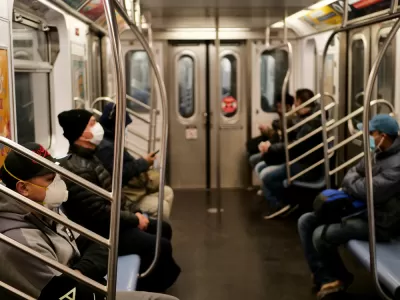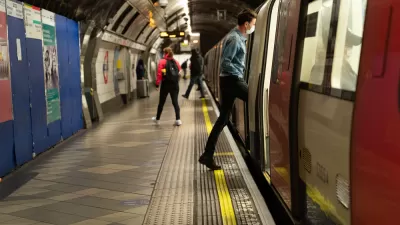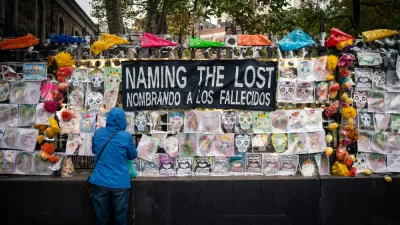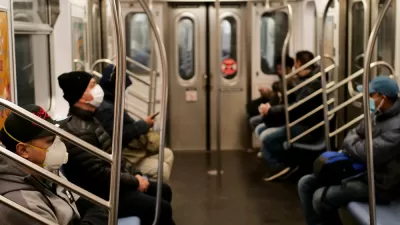A knee-jerk history of coronavirus in New York City is being revised.

Janette Sadik-Khan, former commissioner of the New York City Department of Transportation and co-author of Streetfight: Handbook for an Urban Revolution, joins with Seth Solomonow, the other co-author of Streetfight, to write an article for The Atlantic that reclaims the high ground of epidemiological evidence in the spread of coronavirus in New York City.
To sum: there was never as much evidence about the spread of the novel coronavirus on public transit in New York as some reports and media narratives claimed.
The headline of a recent report by an MIT economics professor read like the title of a 1950s horror film: “The Subways Seeded the Massive Coronavirus Epidemic in New York City.” The report concluded that New York’s subway system was “a major disseminator—if not the principal transmission vehicle” in the city’s COVID-19 outbreak.
Numerous articles followed and the narrative gained steam. "Some elected officials urged Governor Andrew Cuomo to shut down New York’s transit system," according to the article.
Underlying all that fear, however, "is an assumption of danger that, so far, research has not borne out." For instance, "[a] recent study in Paris found that none of 150 identified coronavirus infection clusters between early May and early June originated on the city’s transit systems. A similar study in Austria found that not one of 355 case clusters in April and May was traceable to riding transit."
For more insight into understanding the risk of contagion while riding public transit, see a recent Planetizen article written by Todd Litman.
FULL STORY: Fear of Public Transit Got Ahead of the Evidence

Trump Administration Could Effectively End Housing Voucher Program
Federal officials are eyeing major cuts to the Section 8 program that helps millions of low-income households pay rent.

Planetizen Federal Action Tracker
A weekly monitor of how Trump’s orders and actions are impacting planners and planning in America.

The 120 Year Old Tiny Home Villages That Sheltered San Francisco’s Earthquake Refugees
More than a century ago, San Francisco mobilized to house thousands of residents displaced by the 1906 earthquake. Could their strategy offer a model for the present?

HSR Reaches Key Settlement in Northern California City
The state’s high-speed rail authority reached an agreement with Millbrae, a key city on the train’s proposed route to San Francisco.

Washington State Legislature Passes Parking Reform Bill
A bill that would limit parking requirements for new developments is headed to the governor’s desk.

Missouri Law Would Ban Protections for Housing Voucher Users
A state law seeks to overturn source-of-income discrimination bans passed by several Missouri cities.
Urban Design for Planners 1: Software Tools
This six-course series explores essential urban design concepts using open source software and equips planners with the tools they need to participate fully in the urban design process.
Planning for Universal Design
Learn the tools for implementing Universal Design in planning regulations.
Ada County Highway District
Clanton & Associates, Inc.
Jessamine County Fiscal Court
Institute for Housing and Urban Development Studies (IHS)
City of Grandview
Harvard GSD Executive Education
Toledo-Lucas County Plan Commissions
Salt Lake City
NYU Wagner Graduate School of Public Service





























